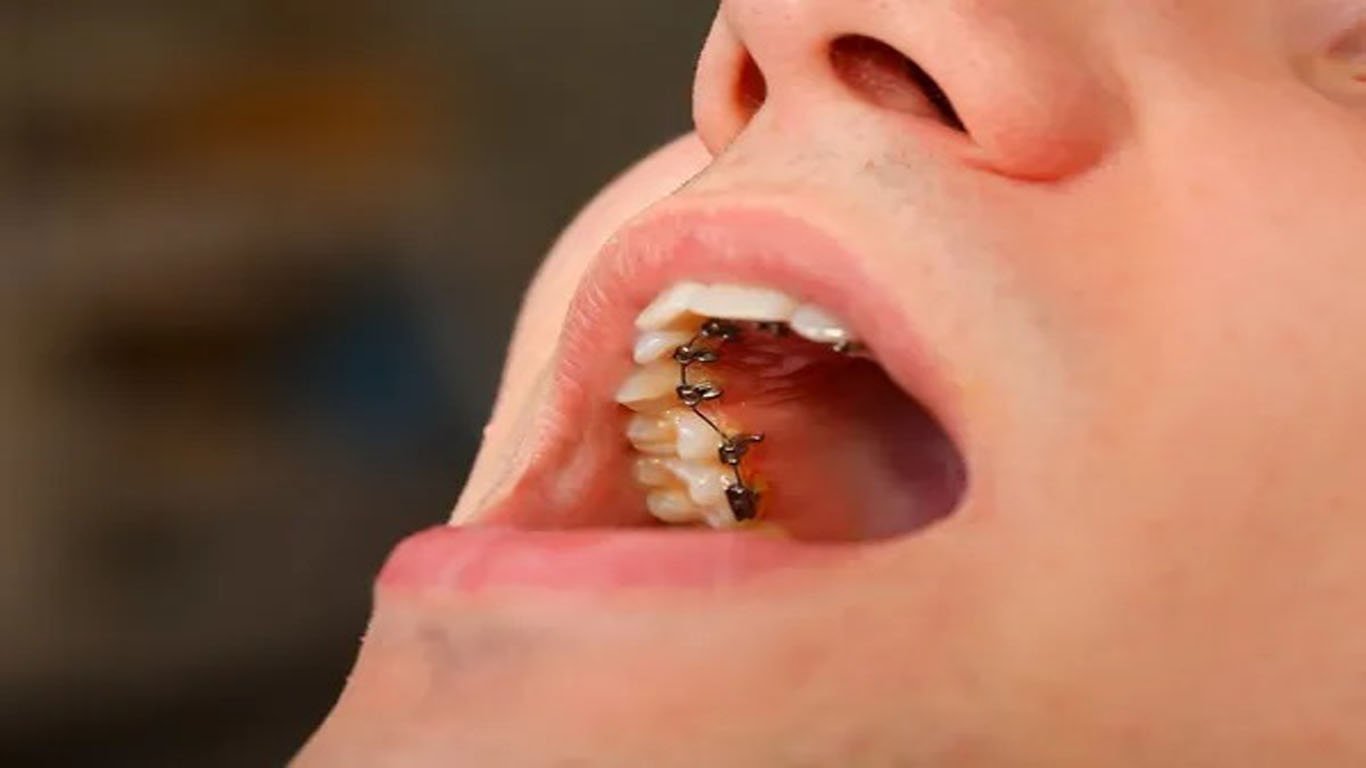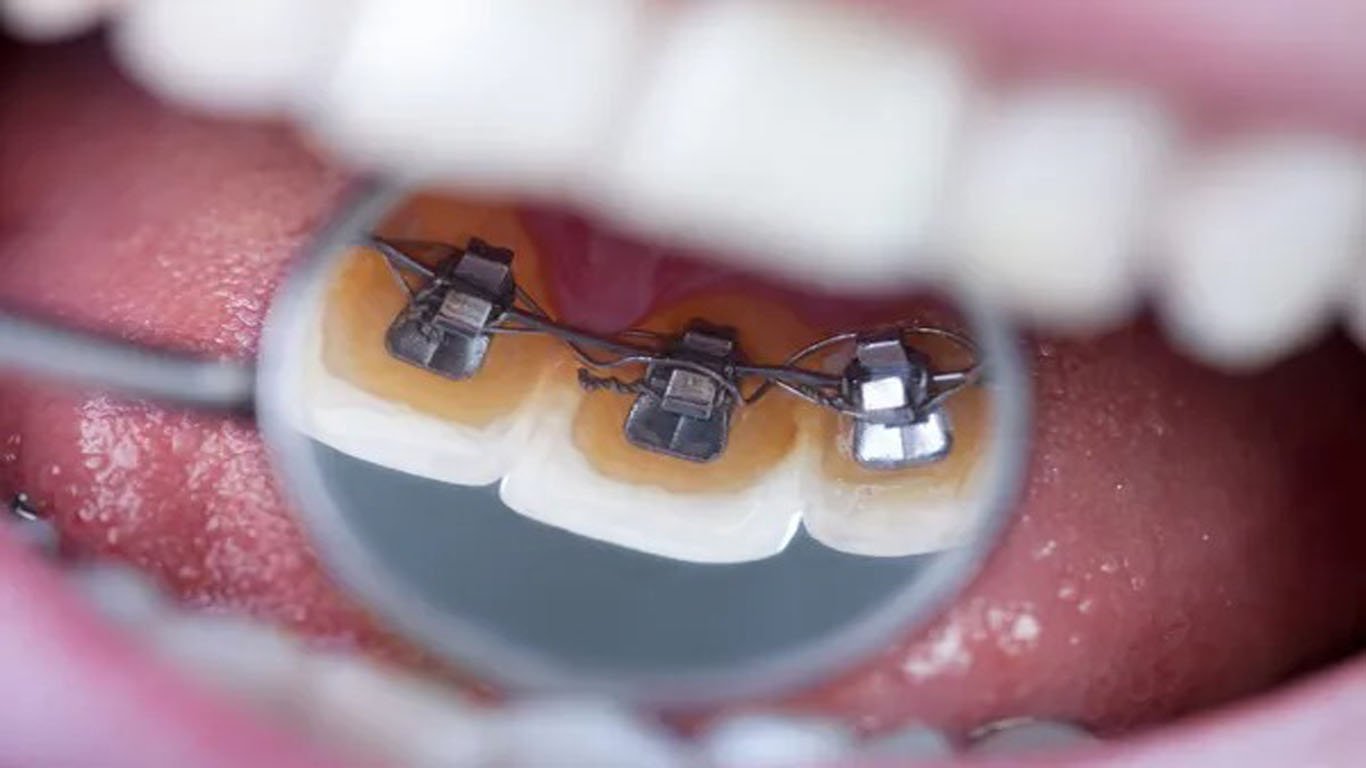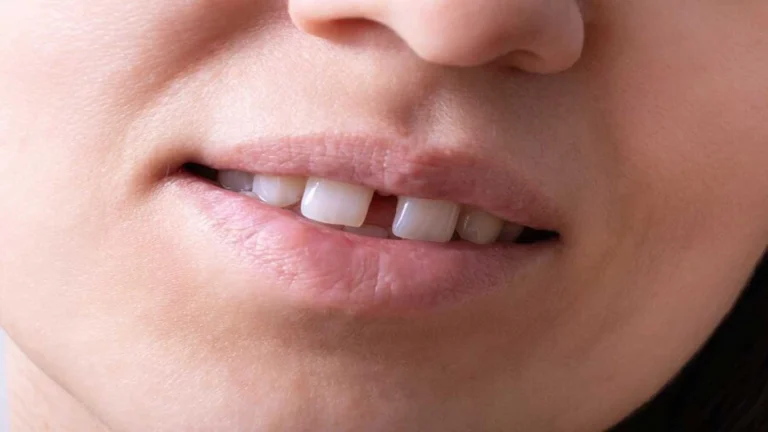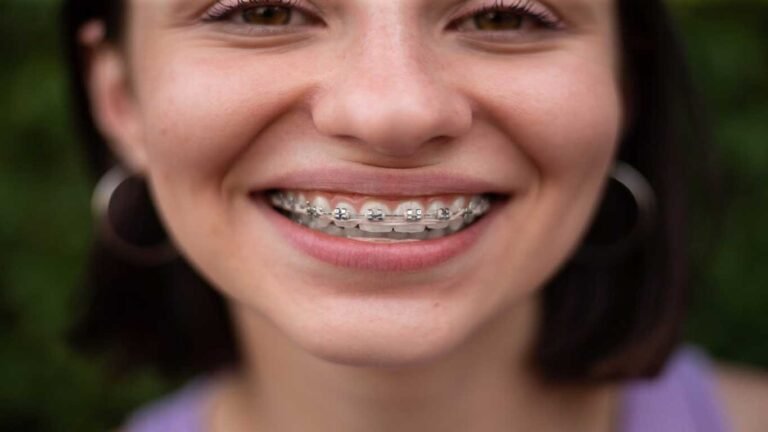Lingual braces, also known as “incognito” or “hidden” braces, are a type of orthodontic treatment where the brackets and wires are placed on the back side of the teeth, making them virtually invisible from the front. In this article, we will discuss the pros and cons of this option, how they differ from traditional braces, and who might be a good candidate for this treatment.
Who are the right candidates for lingual braces?
Your orthodontist is the only one who can tell you whether this option suits your needs. Generally, this option is the best treatment for those who want to straighten their teeth without visible metal brackets on their front teeth. However, not everyone is a good candidate for lingual orthodontics.
Here are some factors that determine who is the best candidate for this treatment.
- Mouth size and shape: Because inside braces are placed on the back side of teeth, there must be enough space to accommodate the brackets and wires. People with smaller mouths or misshapen teeth may not be able to get this treatment.
- Bite issues: People who suffer from deep overbites or underbites are not good candidates; they ought to look for another treatment that suits their needs.
- Oral hygiene: Maintaining good oral hygiene is crucial when wearing braces, and it can be more challenging when you opt for this option as they are more difficult to clean than traditional braces. People who are committed to taking good care of their teeth and gums may be well-suited for this option.
- Speech concerns: This treatment may affect speech initially, and it may take a few weeks to get used to it.
- Cosmetic concerns: This option is ideal if you want to straighten your teeth without having visible braces on your front teeth.
Please note that if you’re interested in this treatment option, talk to your orthodontist at an early stage since not every orthodontist is trained to apply it.
Lingual braces cost
Overall, the cost of braces is heavily influenced by:
- Where you live
- The length of your treatment
- The appliance type
- Your insurance coverage
Generally, the cost of lingual braces may be higher since applying them is more delicate and a bit more time-consuming than traditional braces. Moreover, customized inside braces can bump up the overall price.
Unlike conventional braces, where the wires are bent in a uniform horseshoe shape, some brands of lingual braces can be robotically bent to fit the specific contours of a patient’s mouth. While this custom fit may result in a shorter treatment time, it typically comes at a higher cost.
Here is the average cost of each type of brace:
| The type of braces | cost |
| Conventional metal braces | $3,000–$7,350 |
| Ceramic braces | $2,000–$8,500 |
| Aligner trays | $3,000–$8,000 |
| Lingual braces | $5,000-$13,000 |
Can lingual braces cause a lisp?
Yes. Your tongue will touch the backs of your teeth to pronounce certain sounds. As a result, the brackets on the backs of your teeth may affect your speech, especially in the first few weeks. However, most people grow accustomed to it, and their speech returns to normal. In some cases, a speech therapist may be able to help patients overcome any persistent speech issues.
Remember to discuss any concerns about speaking with your orthodontist before opting for this treatment.
The pros and cons of braces behind teeth
Advantages:
- They are virtually invisible.
- They can effectively treat most bite issues.
- They can be customized to fit the unique contours of a patient’s teeth, potentially leading to a shorter treatment time.
- Because they are on the back of the teeth, there is no risk of staining or discoloration on the surfaces of the front teeth.
Lingual braces disadvantages:
- They can be more difficult to clean than traditional braces, increasing the risk of tooth decay and gum disease.
- They may cause temporary speech difficulties or a lisp.
- They may not be suitable for patients with severe orthodontic issues or small mouths.
- They are typically costlier than traditional braces and may not be covered by insurance.
Do lingual braces cause more discomfort than other types of braces?
Lingual braces can cause more discomfort or pain because the brackets are placed on the back of the teeth and can be in contact with the tongue, leading to irritation and soreness. However, the level of discomfort can vary depending on the individual’s pain tolerance and the severity of the orthodontic issues.
A dull ache is common in most patients, and it can often be alleviated with over-the-counter pain medications. To relieve tender spots, apply tooth pain relief gel or a small amount of wax to the sharp edges of your brackets.
After trying all the mentioned recommendations, contact your orthodontist if a wire is still poking or scratching.
Lingual braces vs. Invisalign
Both options provide an alternative to traditional braces for people seeking a more discreet solution. While both have advantages and disadvantages, they differ in several significant ways.
Lingual braces, also known as behind-the-teeth braces, are placed on the back of the teeth rather than the front. This makes them virtually invisible, but they can cause temporary speech difficulties or discomfort due to their placement. Lingual braces are suitable for people with a wide range of orthodontic issues and can be customized to fit the unique contours of a patient’s teeth.
Invisalign, on the other hand, is a system of clear, removable, and custom-made aligners that fit over the patient’s teeth. Invisalign is suitable for people with mild to moderate orthodontic issues, and treatment typically takes between 12 and 18 months.
One of the main advantages of Invisalign is that it is removable, which makes it easier to maintain good oral hygiene and reduces the risk of staining or discoloration. However, because the aligners are removable, it is essential to wear them consistently for the recommended time each day to ensure effective treatment. Invisalign aligners may also cause some discomfort or soreness during the initial adjustment period.
As mentioned, lingual braces are effective at treating a wider range of orthodontic issues than Invisalign. However, they can be more challenging to clean, and they may cause temporary speech difficulties or discomfort due to their special placement.
Ultimately, the choice between two options comes down to personal preference, the severity of the orthodontic issues, and the patient’s lifestyle and daily routine. Discuss both options with your orthodontist to determine the best treatment for your problem.
Lingual braces before and after
Lingual braces can provide significant before-and-after results for patients seeking a straighter smile. Before treatment, the patient’s teeth may be crooked, overcrowded, or have gaps. This can cause aesthetic concerns as well as functional issues such as difficulty chewing or speaking. Lingual braces work by applying constant pressure to the teeth, gradually moving them into the desired position over the course of several months to a few years, depending on the individual case.
After treatment, the patient’s teeth will be straighter and more aligned, creating a more aesthetically pleasing smile. In addition to the cosmetic benefits, patients may also experience improved oral health, as straighter teeth are easier to clean and less prone to tooth decay and gum disease. The exact before and after results will vary depending on the individual case, but in general, lingual braces can provide a discreet and effective option for achieving a straighter, healthier smile.
Lingual retainer
Lingual retainers or splints are minimally invasive to dental tissue and can be removed if necessary. Wire breakage is rare, and the slightly flexible properties of the wire allow for a natural movement of the teeth, which is beneficial for patients with periodontal issues.
Unlike traditional retainers, lingual retainers are hidden from view, making them a more aesthetically pleasing option for many patients. The lingual retainer is typically made of a thin, flexible wire that bonds to the teeth using a dental adhesive. They are often used after braces or other orthodontic treatments to prevent the teeth from shifting or relapsing back to their previous positions. They can also be used to treat minor orthodontic issues or to help maintain the results of previous orthodontic treatment.
Conclusion
If you are looking for a discreet and effective way to straighten your teeth, lingual braces may be a great option that suits your needs. At York Orthodontics, Dr. Mir will help you achieve a healthy, confident smile. We provide customized treatment to meet your needs and preferences, allowing you to achieve the smile of your dreams. Contact us today to schedule a free consultation and find out the best and most affordable treatment option.






